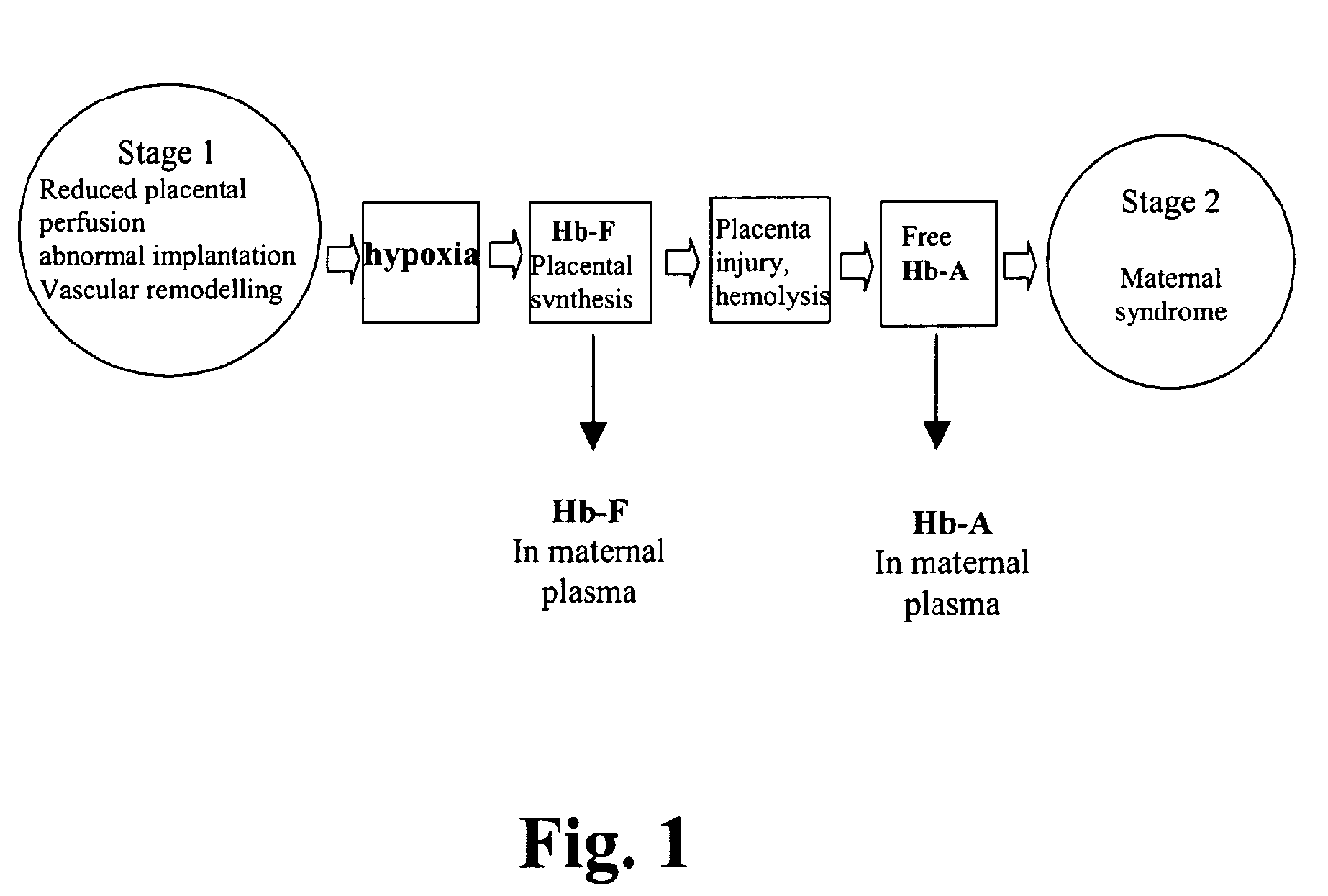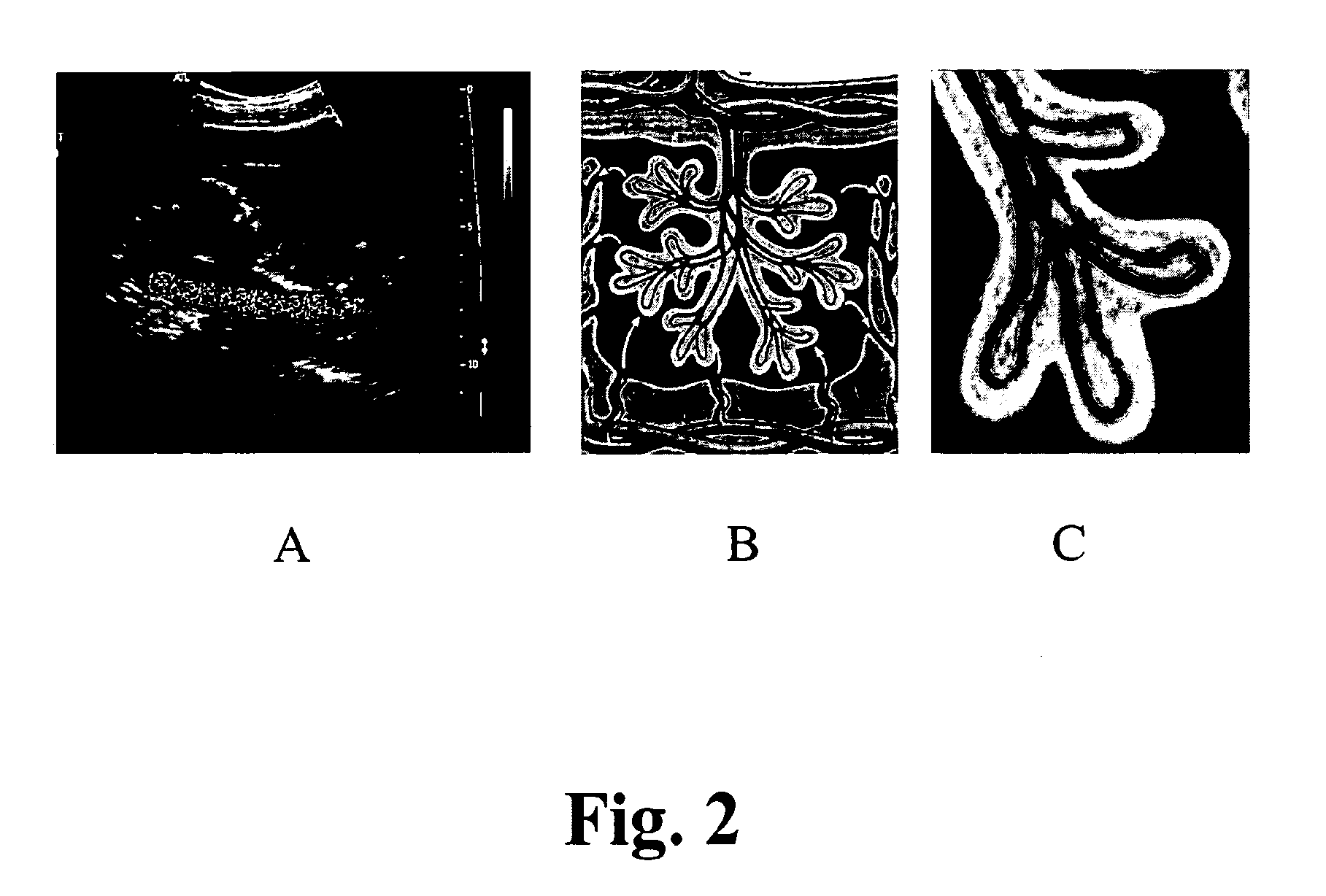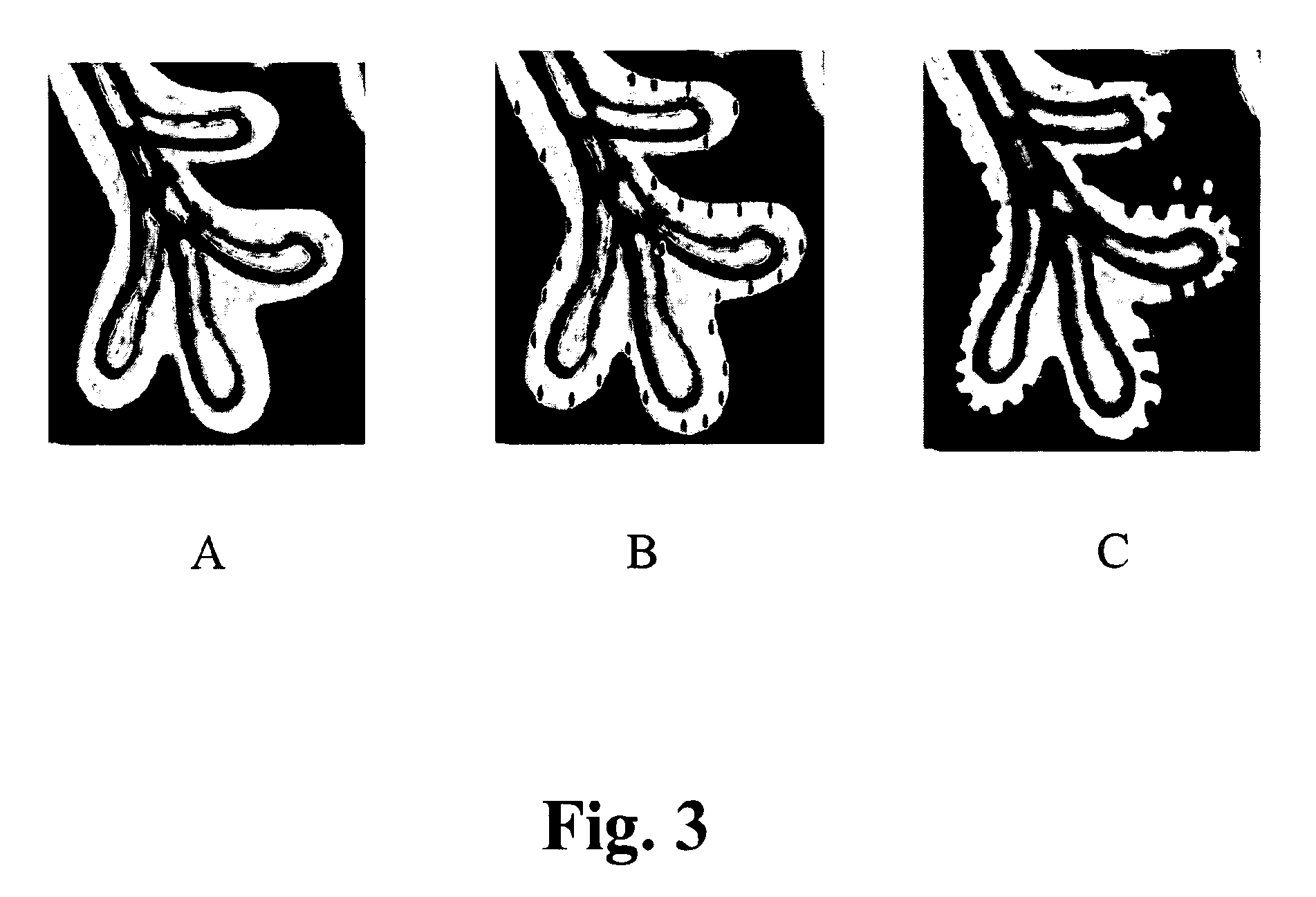Diagnosis and treatment of preeclampsia
a preeclampsia and biomarker technology, applied in the direction of instruments, extracellular fluid disorder, peptide/protein ingredients, etc., can solve the problems of general endothelial cell damage in the placenta, the most common cause of death for both children and mothers, and the increase of maternal mortality and morbidity
- Summary
- Abstract
- Description
- Claims
- Application Information
AI Technical Summary
Benefits of technology
Problems solved by technology
Method used
Image
Examples
example 1
Detection of Hb RNA and Protein in Placenta
[0157]Quantitative RT-PCR, In situ hybridization and immunohistochemistry was performed to analyze Hbα, Hbβ and Hbγ mRNA and protein expression in placental samples in PE vs. control subjects.
[0158]Placental tissue was collected at the Department of Obstetrics and Gynaecology, Lund University Hospital. The sampling, performed with written consent, was approved by the Ethical Committee Review Board for studies in human subjects. Placental tissue from 10 preeclamptic, 15 normal pregnancies, 5 patients with bilateral notch and 5 patients with bilateral notch as well as preeclampsia were included in the study. Placental bed samples (see below) from 5 of the patients with PE and 5 of the controls were also collected. Preeclampsia was defined as blood pressure >140 / 90 mm Hg and proteinuria >0.3 g / L. Patients with essential hypertension or other systemic diseases were excluded. Placenta samples were collected at birth, immediately...
example 2
Detection of Fetal Hb in Maternal Blood
[0177]Quantitative RT-PCR was performed to analyze Hbγ mRNA in blood samples in PE subjects.
Real-Time PCR
[0178]RNA was extracted using QIAamp Viral RNA mini kit (Qiagen) according to manufacturer's instructions. Briefly, 3.6 ml of AVL Buffer was mixed with 36 μl of carrier-RNA (Qiagen) by inverting the tube 10 times. 1 ml of the plasma sample was spun at 1150 g for 10 minutes. 900 μl of the plasma and 3.6 μl of 99% ethanol was added to the AVL buffer solution. Approximately 650 μl of the solution was added to a QlAamp column and spun at 6000 g for 1 minute. This was repeated until the total plasma volume had been added to the column. Column was washed once with AW1 buffer, then spun at 6000 g for 1 minute, followed by a wash with AW2 buffer, then spun at 20,000 g for 3 minutes. RNA was eluated with 50 μl RNAse free water.
[0179]Fetal Hb RNA was quantified with real-time PCR.
Results
[0180]FIG. 7 shows a scatter plot of fetal Hbγ mRNA levels in mat...
example 3
Protein Expression Profiling of the Preeclamptic Placenta Using 2D-Gel Electrophoresis
[0181]In order to screen for differentially expressed proteins in the PE placenta compared to control placentas, we collected placenta samples at delivery from women with PE (n=30) and healthy controls (n=30). Using proteomics technology (2-dimensional gel electrophoresis) we compared haemoglobin delta (Hbδ) expression levels in the different placenta samples.
Patients and Sample Collection
[0182]60 women admitted at the Department of Obstetrics and Gynaecology, Lund University Hospital were included, and assigned to two groups; PE (n=30) and control (n=30) (Table 2). PE was defined as blood pressure of >140 / 90 mmHg and proteinuria of >0.3 g / l or rise in blood pressure above 20 mmHg from the first trimester of pregnancy. A 10×10×10 mm cube of placenta tissue was collected immediately after removal of the placenta. Samples were immediately frozen on dry ice and stored at −80° C. Patients with other sy...
PUM
| Property | Measurement | Unit |
|---|---|---|
| diastolic blood pressure | aaaaa | aaaaa |
| concentrations | aaaaa | aaaaa |
| pH | aaaaa | aaaaa |
Abstract
Description
Claims
Application Information
 Login to View More
Login to View More - R&D
- Intellectual Property
- Life Sciences
- Materials
- Tech Scout
- Unparalleled Data Quality
- Higher Quality Content
- 60% Fewer Hallucinations
Browse by: Latest US Patents, China's latest patents, Technical Efficacy Thesaurus, Application Domain, Technology Topic, Popular Technical Reports.
© 2025 PatSnap. All rights reserved.Legal|Privacy policy|Modern Slavery Act Transparency Statement|Sitemap|About US| Contact US: help@patsnap.com



